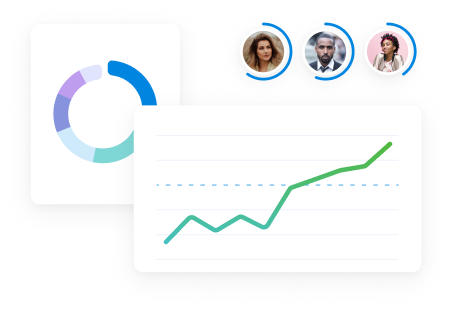Operational efficiency is the engine behind a profitable, scalable business.
But as your consultancy, agency, or firm grows, staying efficient becomes harder.
Why?
Because issues like scope creep, manual workflows, and resource conflicts will also grow if left unaddressed. And they can quickly sink productivity and your profits.
Here are our top tips to improve operational efficiency as you scale:
1. Standardize workflows and automate repetitive tasks
Inconsistent workflows slow down projects, confuse team members, and lead to quality issues.
Use standard operating procedures (SOPs) to keep your team on the same page. These documents lay out the exact steps to follow so everyone uses the same process. Which creates more consistent results and helps your team work more efficiently.
Some common workflows that benefit from SOPs include:
- Client onboarding: Use a standardized intake process to connect clients to key points of contact, collect essential information, and introduce them to relevant tools and dashboards. This prevents confusion and helps clients feel more confident in your work together—you’ve given clear documentation and set them up for a strong relationship.
- Invoicing and billing: Create a clear invoicing workflow on a set schedule (for retainers) or after certain triggers (like the start of a new one-time project). This helps you avoid billing delays, which can cause cash flow issues and affect profitability.
- Project kickoffs: Develop a step-by-step guide to launch new projects with a proven, consistent process. This helps both your team and your clients get aligned on goals and clarify timelines so everyone can work efficiently.
For any departures from SOPs (like a client that doesn’t want any kickoff calls or only wants to communicate in Slack), document them clearly in your client or project materials. This makes it easier for your team to follow the revised process without having to waste time digging through files.
Besides creating SOPs, focus on task automation. By automating tasks, your team can work faster, reduce manual errors, and free up time for higher-value work. Like strategic planning or upskilling.
Scoro’s Harv Nagra, a former ops director, emphasizes how SOPs and automation benefited his team:
Not only was there a deck to take clients through, but there were also a number of actions triggered internally. Like turning the quote into a project in Scoro, raising the first invoice, and scheduling invoices for the remainder of the project value based on when we intended to invoice those.
Use tools like Zapier to automate time-consuming tasks. This no-code solution automatically transfers data between project management tools and different kinds of apps and software in your tech stack.
Or use a professional services automation (PSA) tool like Scoro to speed things up. As an all-in-one tool, Scoro can automate everything from project management to finances to reporting in just one platform.
For example, you can automatically turn a quote into a project and create tentative bookings for each role involved—before you’ve even defined the detailed task plan.
This gives project and resource managers a huge head start:
- Use tentative bookings (striped background) to block time for key roles or people while you await final scope approval
- Switch to fixed bookings (solid background) once timelines and deliverables are confirmed and committed
- Use the heatmap to visualize capacity instantly. Green = available, orange = nearing capacity, red = overbooked—so you can plan ahead with confidence
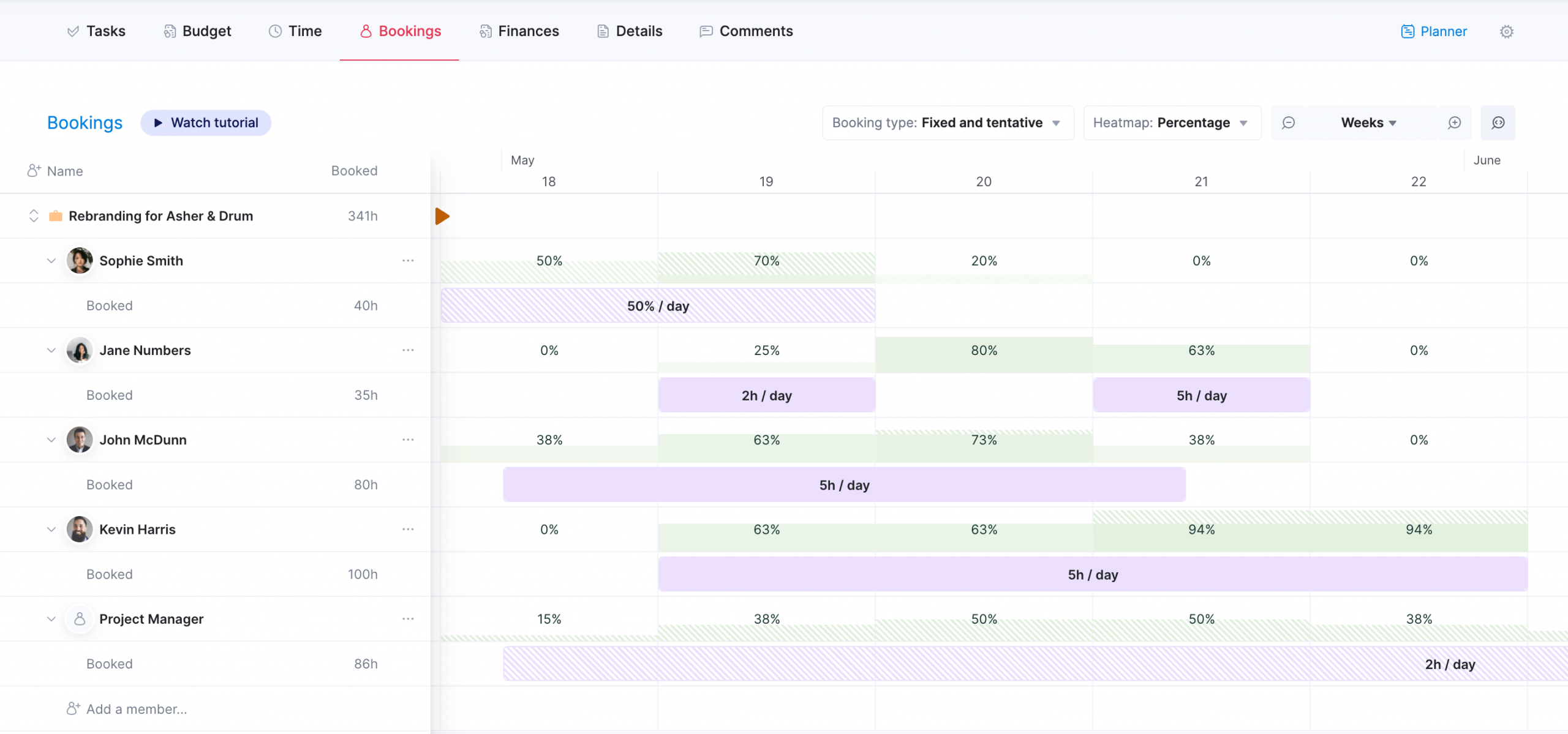
Plus, it has over 50 pre-built integrations—including ones with QuickBooks and Xero for invoicing.
2. Improve resource planning and capacity management
Achieving balanced workloads is one of the keys to success.
Overloaded teams tend to burn out and produce lower-quality work. At the same time, underutilized teams sit idle, compromising profitability.
When you lack visibility into workloads, you can’t resolve these issues—you can only cause them. Like accidentally assigning a skilled designer to multiple high-priority projects with overlapping deadlines.
But with real-time workload data, you can accurately determine who has bandwidth and who’s already at capacity. So you can improve resource planning and avoid both burnout and idle time.
Scoro makes it easy to plan resources and see who is over- or underbooked before assigning work.
Use the “Bookings” module that gives you a bird’s-eye view of your entire team’s availability across every project and role.
And it uses the same color-coded heatmap as the project-level view, so your whole team can speak the same visual language:
- Green background – Time has been booked, but capacity is still available (under capacity)
- Red background – The resource is overbooked (more time booked than available)
- Grey background – The resource is not available (e.g. non-working day)
- White background – No capacity available (typically for placeholder roles)
- Yellow corner – Indicates time off has been booked
- Violet corner – Indicates extra availability
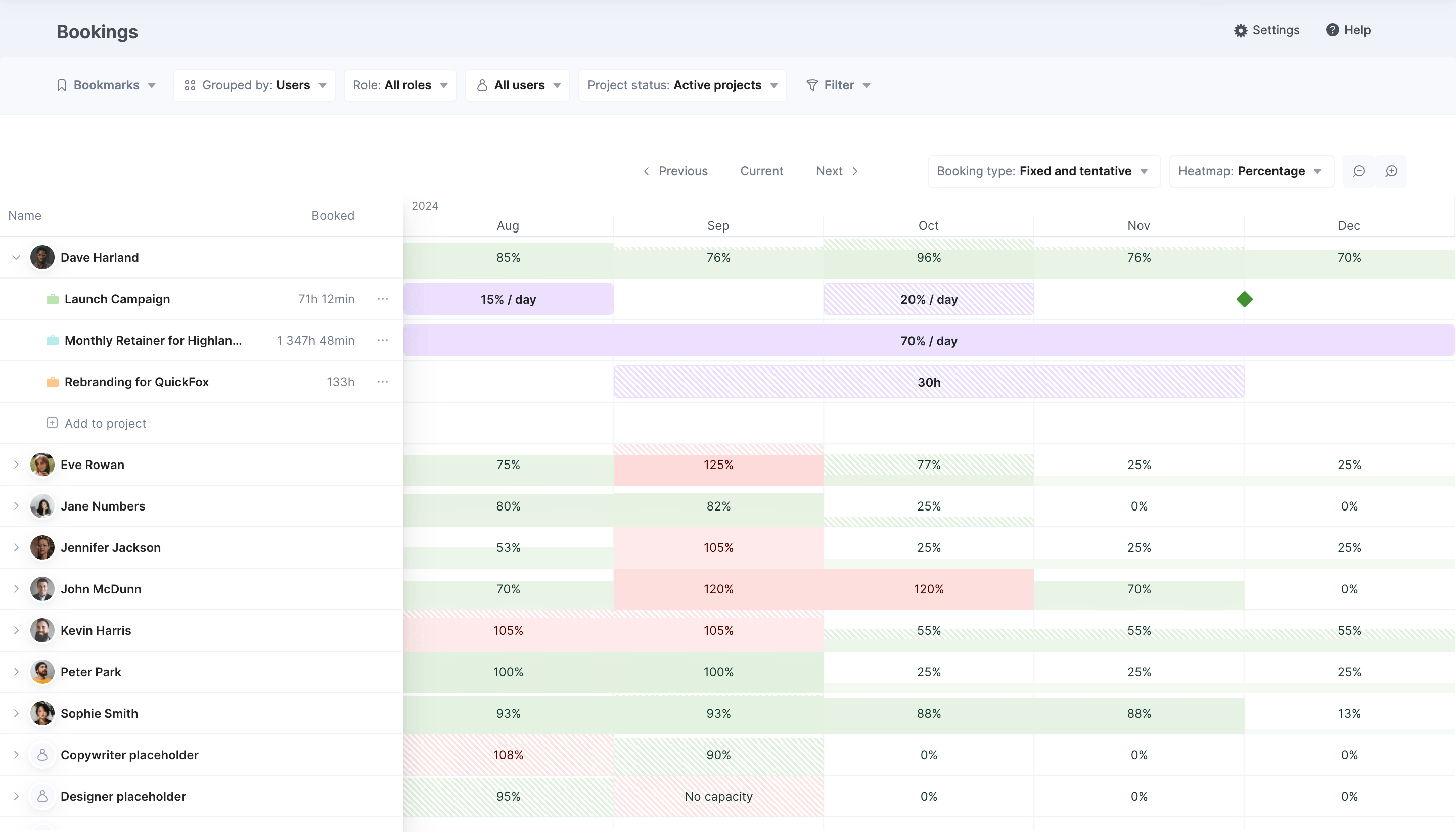
Still, remember that even the most comprehensive PSA tool might not reflect all potential conflicts (like upcoming time off), which can affect your resource scheduling.
So, double-check with team members before finalizing assignments to make sure they can take on the work.
And ask them how they feel about their current workload—are they overwhelmed? Bored?
Showing that you care and want to help makes a difference.
As Gallup’s State of the Global Workplace: 2024 Report notes, the support managers give to employees accounts for 70% of variation in team engagement.
3. Track metrics that matter
Many service firms don’t know which projects, clients, or services are most profitable. This leads to wasted time and low-margin work.
Say a client is supposed to represent 30% of your revenue. But their projects consistently take more time and resources than scoped.
So in reality, working with that client might actually be costing you money. And you’d need to adjust pricing.
To gauge true value, you need to measure your resource utilization, profit margins, and revenue leakage:
Utilization rate
A utilization rate represents how much time an employee spends on billable work.
Say your designer works 40 hours per week. But only 20 are billable, with the remaining 20 spent on internal meetings and designing a pitch deck.
Their utilization rate would be 50% (20/40).
But ideally, you want to keep billable utilization between 70-80%.
Why?
Because when it falls below that range, it means your business has missed opportunities to bring in more revenue.
And when it’s above it, employees are subject to burnout. Which creates delays and quality issues that impact organizational efficiency.
Scoro’s capacity planning features can help.
For example, the “Utilization” report automatically tracks utilization rates. And uses color coding to reflect underutilized (white) and overutilized (red) employees.
Use this data to balance workloads across your team. And improve billable utilization.
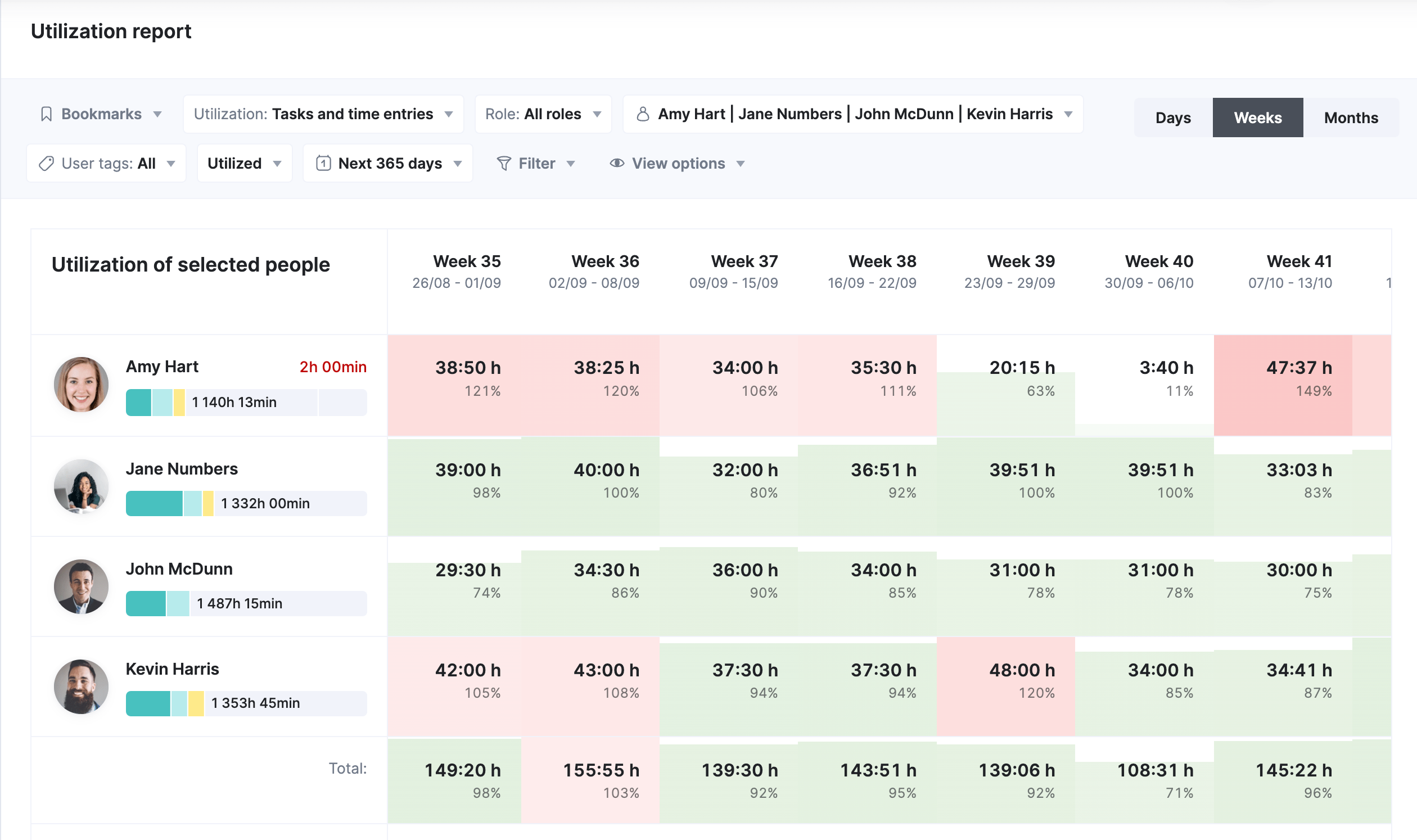
Profit margins
Project profitability measures how well your business generates revenue relative to its expenses.
Say you quoted a project at 100 hours, but it took 150 hours to complete. Your profit margins would drop for this project because it went over the estimated time.
Scoro’s “Quoted vs Actual” table shows this data and automatically updates as you track time and progress through the project phases and deliverables:
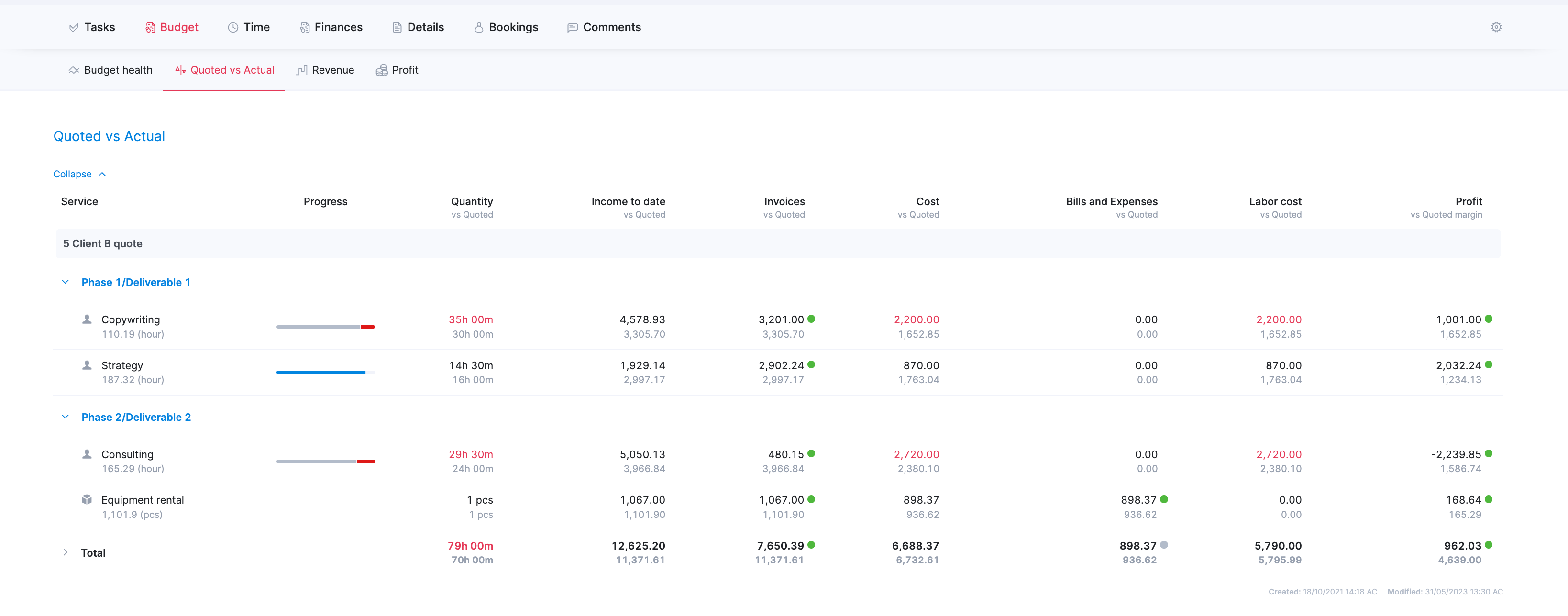
It compares estimated to actual time, expenses, and labor costs, showing how these factors affect project profitability (as shown in the “Profit” column). So you can quickly identify cost overruns and make adjustments to keep the project profitable.
Further reading: 10 Ways Experts Improve Project Profitability
Revenue leakage
Revenue leaks happen when your business doesn’t fully collect on estimated revenue. They can happen because of miscommunications with clients or non-standardized pricing models.
No matter how they happen, revenue leaks lead to lower profitability. A one-time issue might not be a big deal. But repeated problems can seriously compromise your profit margins.
Scoro’s “Projects” list view helps you flag projects with low profitability and potential overservicing.
Check the “Project profit” column to see the profit amount (in bold) and percentage vs your budgeted/expected (in light grey).
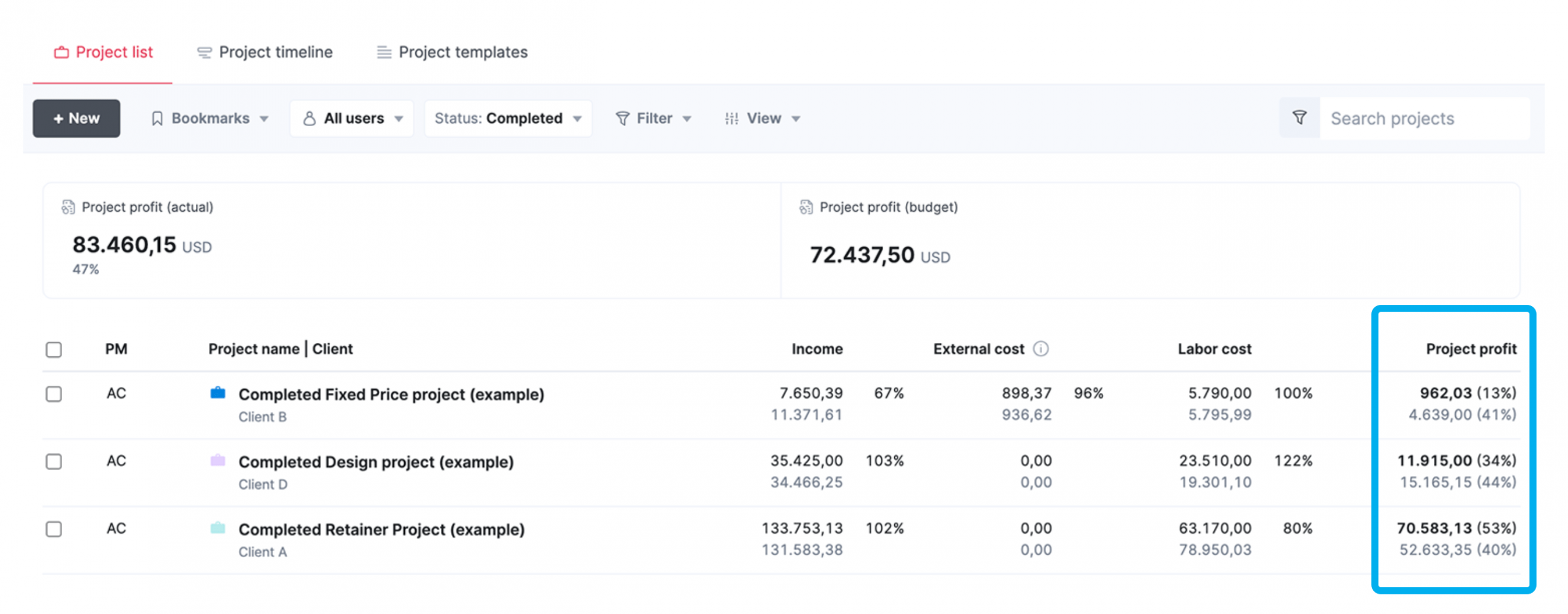
4. Reduce scope creep with detailed project scoping
Vague project scopes often lead to your business doing extra work down the line. Which results in frustrated teams and lower profits.
To avoid these issues, set clear deliverables in every project scope.
Say you’re scoping a website redesign project. Instead of simply listing “website redesign,” break down the project into specific milestones: wireframing, prototyping, and final site delivery.
This clarifies project details, keeps everyone aligned, and prevents incorrect assumptions—like a client expecting the project to also include website copy.
But even with a clear scope, clients may still request additional work.
To make these asks go more smoothly and avoid overservicing, establish a formal change request process. Tell clients how to ask for scope changes (e.g., through email or Slack). Then, confirm the specifics with the client, document them, and charge accordingly.
And make sure that your team uses a time tracking tool to capture all their hours—especially for out-of-scope work. This way, you can make sure you bill for all relevant work and adjust pricing and capacity planning for future similar projects.
Use Scoro’s “Burn health” chart to monitor the money and time you’ve invested as well as forecasted hours and spending. So you can catch projects that are going over budget before it’s too late. And you can make necessary changes, like charging for extra work.
5. Gradually shift from tactical to strategic operations
Operations often start with a tactical approach. Like fixing workflows, implementing timesheets, or automating billing.
As important as these issues are, funneling all your attention toward them means fighting endless, one-off fires. So instead of just focusing on quick fixes, concentrate on creating long-term solutions.
Reevaluate these areas to improve operational performance for the long run:
Team structure
Rethink how you define team structure—including how you build teams and the capabilities they have.
Agencies often assemble teams for specific projects and disband them once the project ends.
Assigning different specialists to each project might seem like the best option. But it creates inefficiencies—and the costs add up.
In a recent episode of “The Handbook: The Agency Operations Podcast,” Preston Chandler, Global Practice Lead of Strategic Operations for WPP, explains that constantly creating new project teams requires each member to learn how to work together. Repeat this process for every new project, and you end up wasting a ton of time.
Studies show that it takes about three to six months for a team to figure out how to work together. The average length of an agency project is three to six months. By the time teams get used to working together, the project ends and they’re back at square one.
Instead, Preston recommends establishing project pods: teams of five to nine people who have all the skills necessary to do the work in question. For example, a standard pod might require a cross-functional team with these roles:
- Strategist
- Designer
- Copywriter
- Media specialist
- Project manager
Since this approach eliminates the need to staff each individual project, resource planning becomes easier.
Plus, teams get used to working together. They can communicate more easily and work more autonomously.
Preston also encourages agencies to fully empower teams to work with clients. Set them up to work as a unit and let them communicate directly with clients.
Governance models
Next, revisit governance, or the way you allow leaders to do their jobs.
Preston recommends an “empowered alignment” approach. It has a central structure with shared goals to keep everyone on the same page and moving in the same direction.
On this cross-functional team, each person has the ability to make decisions within their area of expertise. Which allows for faster decision-making and smarter solutions.
What it doesn’t have is a figurehead who acts as a point of contact or final approver. Preston explains that this approach tends to eliminate guidance and disempower teams.
6. Flatten hierarchies to increase efficiency
Large agencies develop internal hierarchies over time. This eventually slows decision-making, as it requires multiple levels of input.
“We often fall into this pit of thinking that hierarchy is important. And it’s generally not,” says Preston. “Many of the structures we put in place don’t actually foster creativity at all. They do the reverse.”
As Preston explains, the more approvals a deliverable needs, the farther it can move away from the initial concept the designer chose. Which is frustrating and can suppress their creative drive.
To empower teams and support creativity in your workflows, avoid letting managers make every decision.
Instead, give teams a clear foundation to work from. Get on the same page about business and client standards. Then, give teams the power to approve deliverables.
7. Treat your business like a product, not just a service business
Many agencies operate as service providers. They customize every project, which requires extensive manual work and employee time.
Instead, treat your business like a productized system. Think of it as a repeatable, scalable model that operates on clear frameworks.
So rather than generating brand-new service descriptions for every client or project, build service packages with fixed offerings.
For example, offer a three-month SEO sprint, a website design, or a marketing strategy package.
Use Scoro’s Project templates to define your signature services.
Set the duration, phases, deliverables, roles, and even task bundles for each project. Then, reuse the template each time you start a new client project.

Take steps to improve operational efficiency with Scoro
With the right tools and strategies, you can eliminate inefficiencies and boost productivity, essentially doing more with less.
Take SAENTYS, for example. The London-based agency needed a way to standardize operations across its three European offices.
After SAENTYS adopted Scoro, the agency was able to achieve consistency in quoting, project management, time tracking, and financial analysis. Which enabled the firm to begin using data to make more profitable decisions.
Want to improve your operational efficiency? Try Scoro for free for 14 days.





